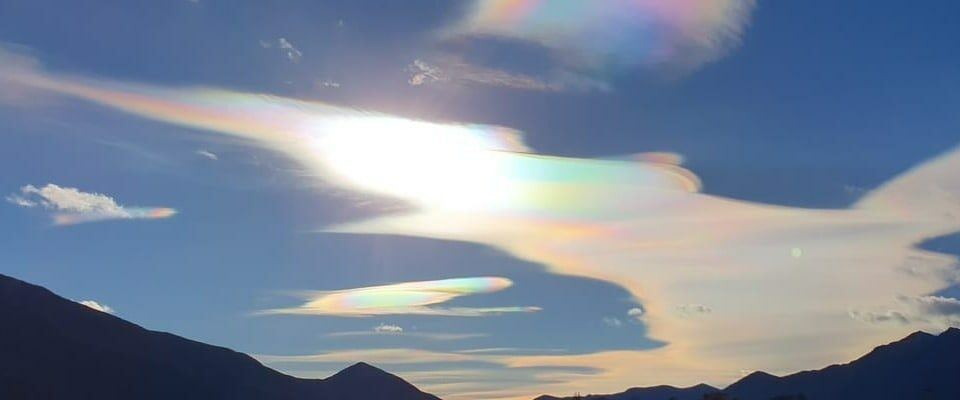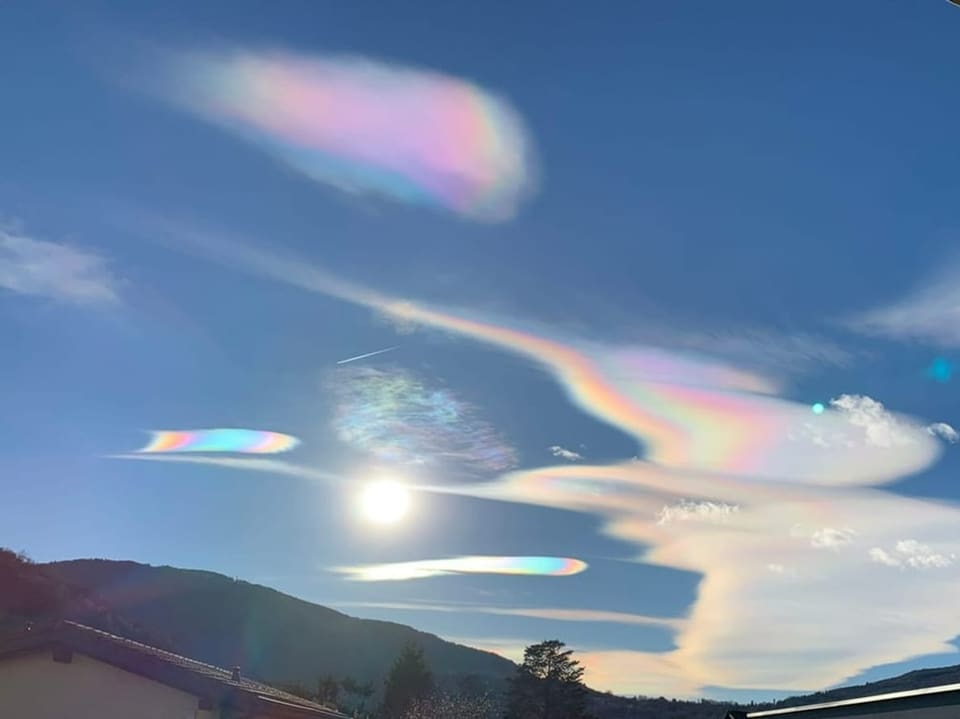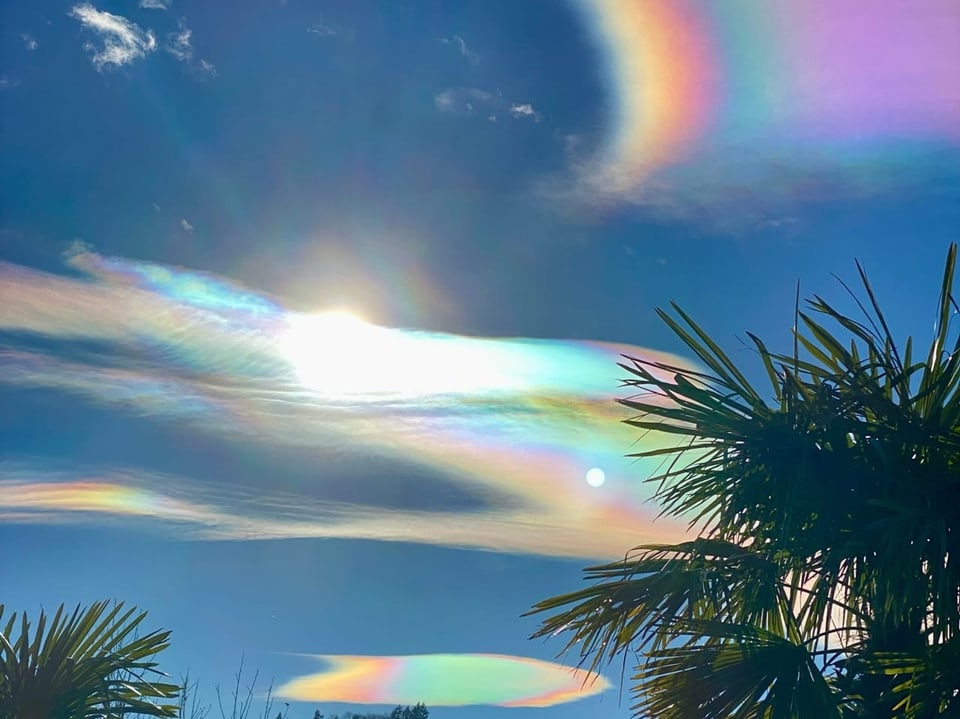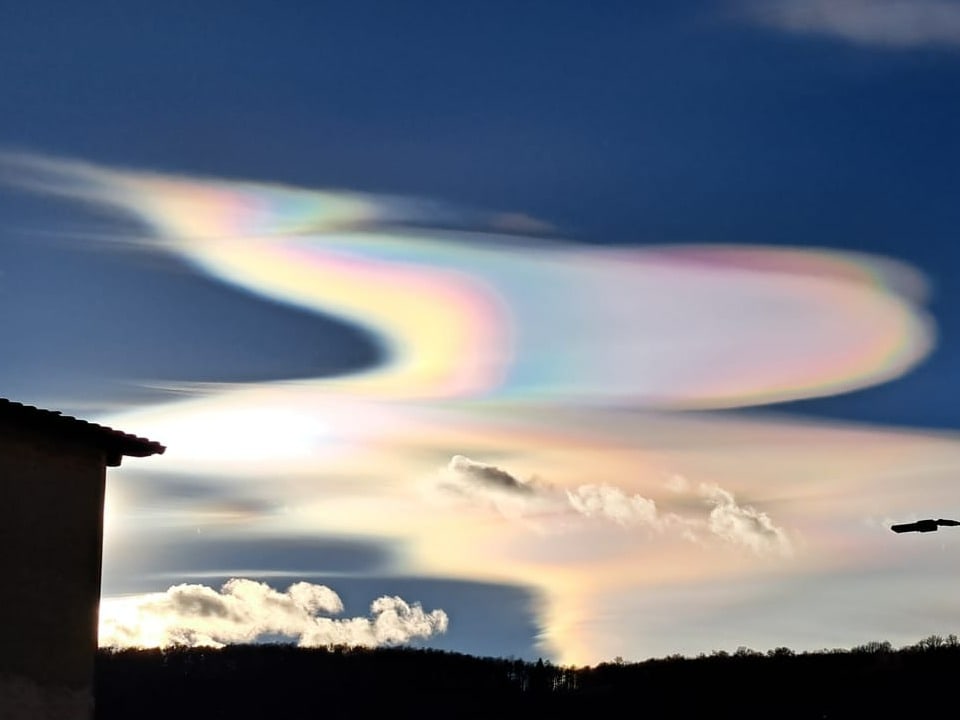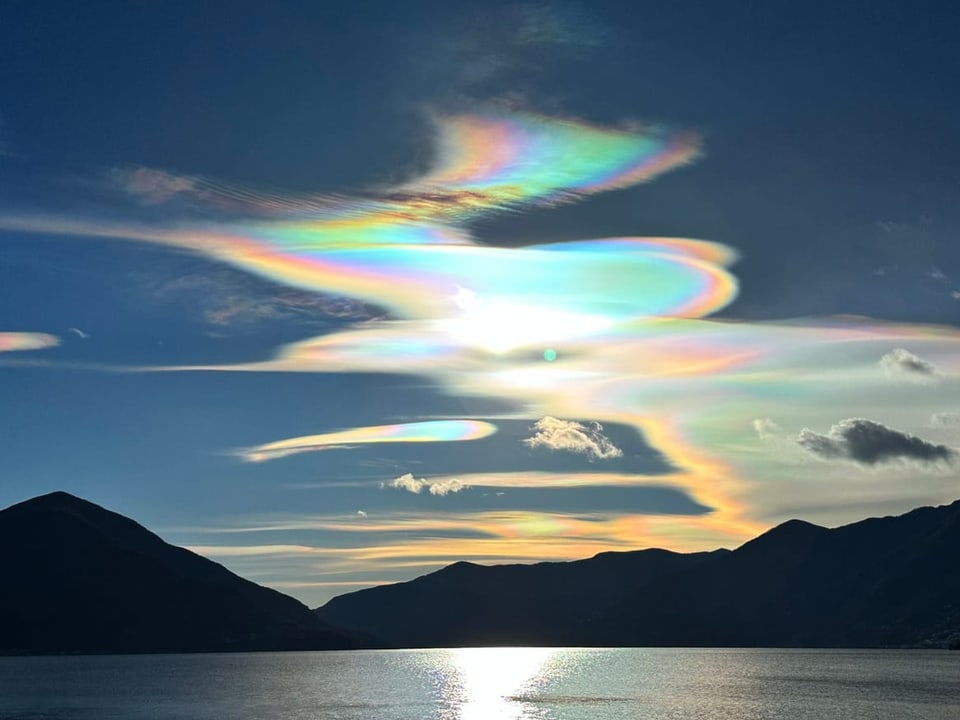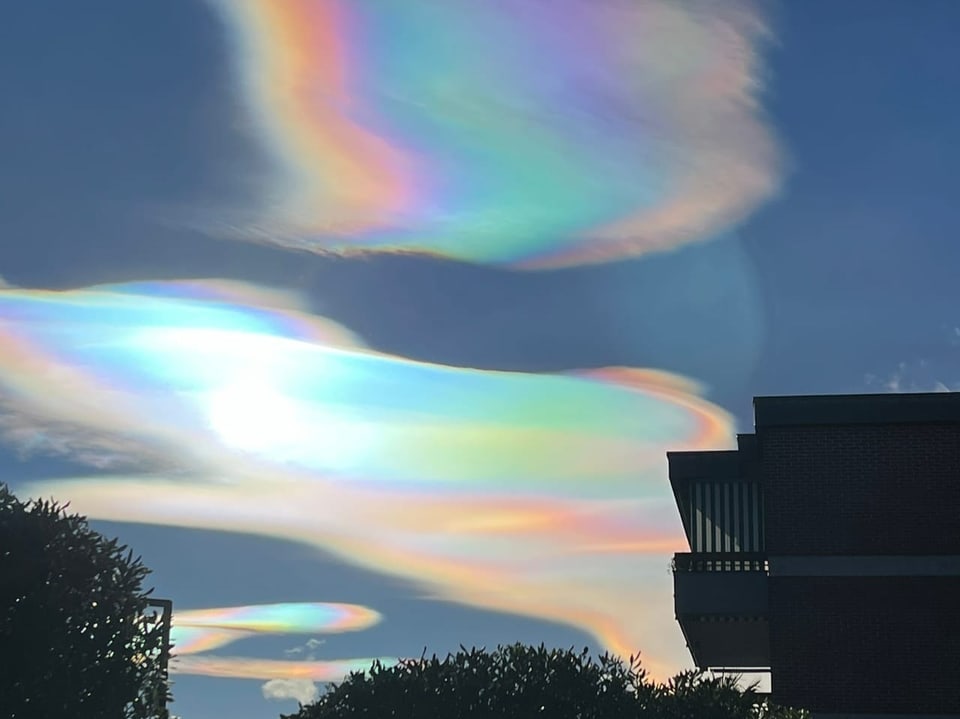Contents
The shortest day of the year was gray in the north, but there were colorful clouds in the south. How do these come about?
How do iridescent clouds form?
According to Duden, “iridescence” means “to shimmer or shine in rainbow colors”. Iridescent clouds are created by the diffraction and interference of sunlight within the cloud.
Light can be illustrated as rays of light or as waves. The wavelength of red light is longer than the wavelength of blue light. And white sunlight consists of all colors.
Now imagine two waves in the water moving towards each other and eventually meeting. If the wave crests meet, they add up; if a wave trough meets a wave crest, the waves can cancel each other out. And that’s exactly what happens in the colored clouds, not with water waves but with light waves.
Iridescent clouds contain very small ice particles or water droplets that are only 0.01 to 0.02 mm in size. These particles bend sunlight, thus redirecting the light waves. This causes the light waves to overlap, amplify or cancel each other out. It can happen that short waves cancel each other out and you only see long-wave red light, or that the yellow wavelength increases and you see a yellow zone in the cloud.
An Alpine phenomenon?
Iridescent effects are most commonly seen on cirrocumulus clouds and often on lenticular clouds in the lee of mountains such as the Alps. All the pictures in today’s gallery also show the effect in clouds that lie on the leeward side of the Alps.
The wind flows through these lenticular clouds and the water droplets are carried very quickly up into the cloud. They don’t have time to form beautiful ice crystals and so these lenticular clouds usually consist of much smaller ice particles than normal ice crystal clouds. And most importantly, the ice particles are round; ideal for diffraction effects.
